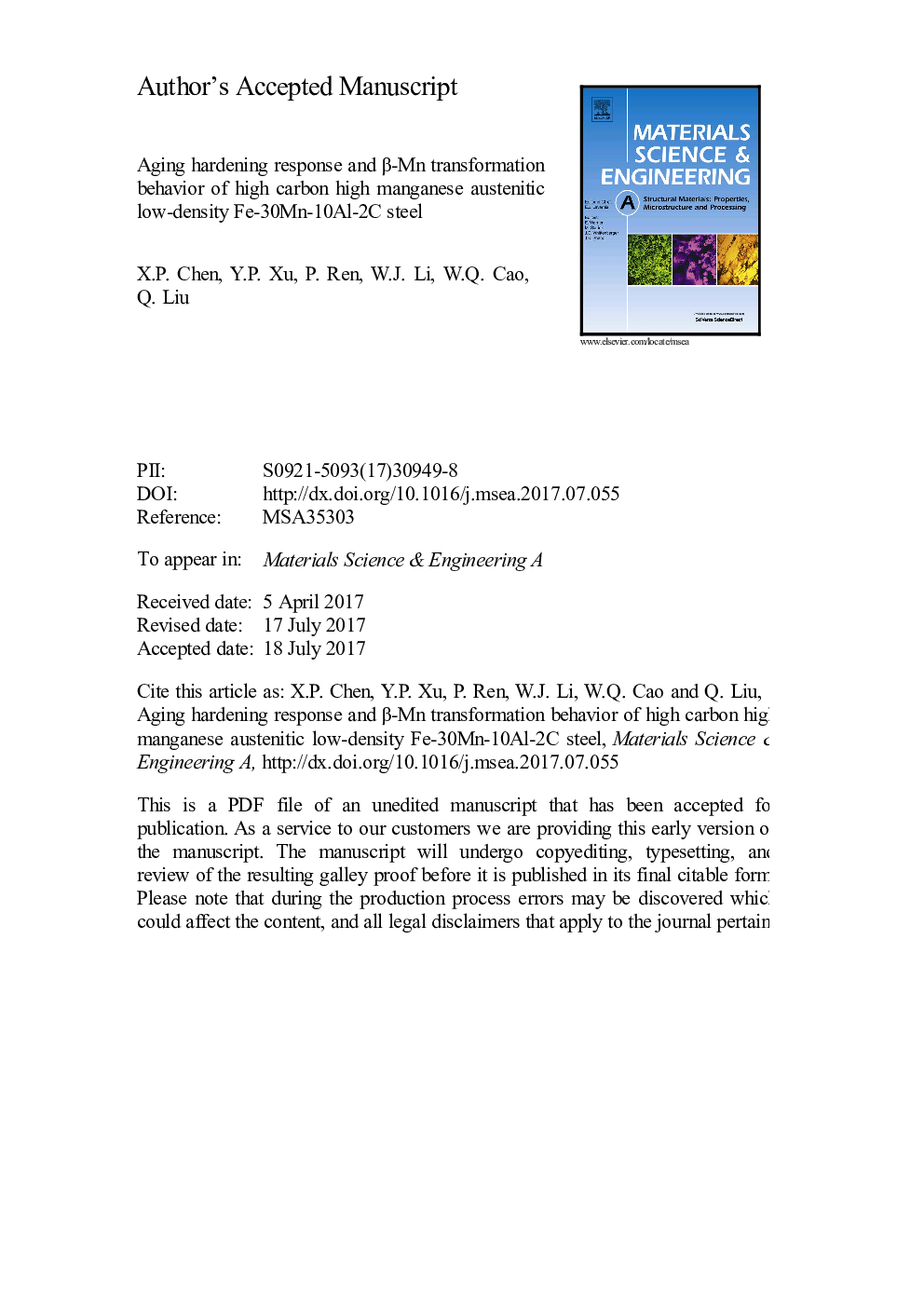| Article ID | Journal | Published Year | Pages | File Type |
|---|---|---|---|---|
| 5455311 | Materials Science and Engineering: A | 2017 | 23 Pages |
Abstract
Aging treatments under three temperatures were performed to investigate the aging hardening response of high carbon high manganese austenitic Fe-30Mn-10Al-2C steel. The dramatic differences in hardness and microstructure were observed after aging under different temperatures. The aging treated at 500 â had a typical aging hardness curve and the hardening response originated from the precipitation of κ-carbide, which plays an important role in performance improvement. When aging was conducted at 700 â, there was no significant change in hardness because a balance between aging hardening and high-temperature softening was built. On the contrary, the aging under 600 â exhibited novel continuous increase in hardness and dramatic secondary hardening due to the formation of β-Mn which had an intrinsic high hardness. In addition, the β-Mn was also found after aging for long time under other temperatures. Unfortunately, the formation of β-Mn distributed along γ grain boundaries led to serious brittle fracture. For further investigation and application, the β-Mn transformation behavior was discussed based on the diffusion and redistribution of elements. Considering the dramatic difference in the formation kinetics of β-Mn depending on aging temperature, the diagram of β-Mn transformation was achieved to obtain optimized aging conditions.
Keywords
Related Topics
Physical Sciences and Engineering
Materials Science
Materials Science (General)
Authors
X.P. Chen, Y.P. Xu, P. Ren, W.J. Li, W.Q. Cao, Q. Liu,
